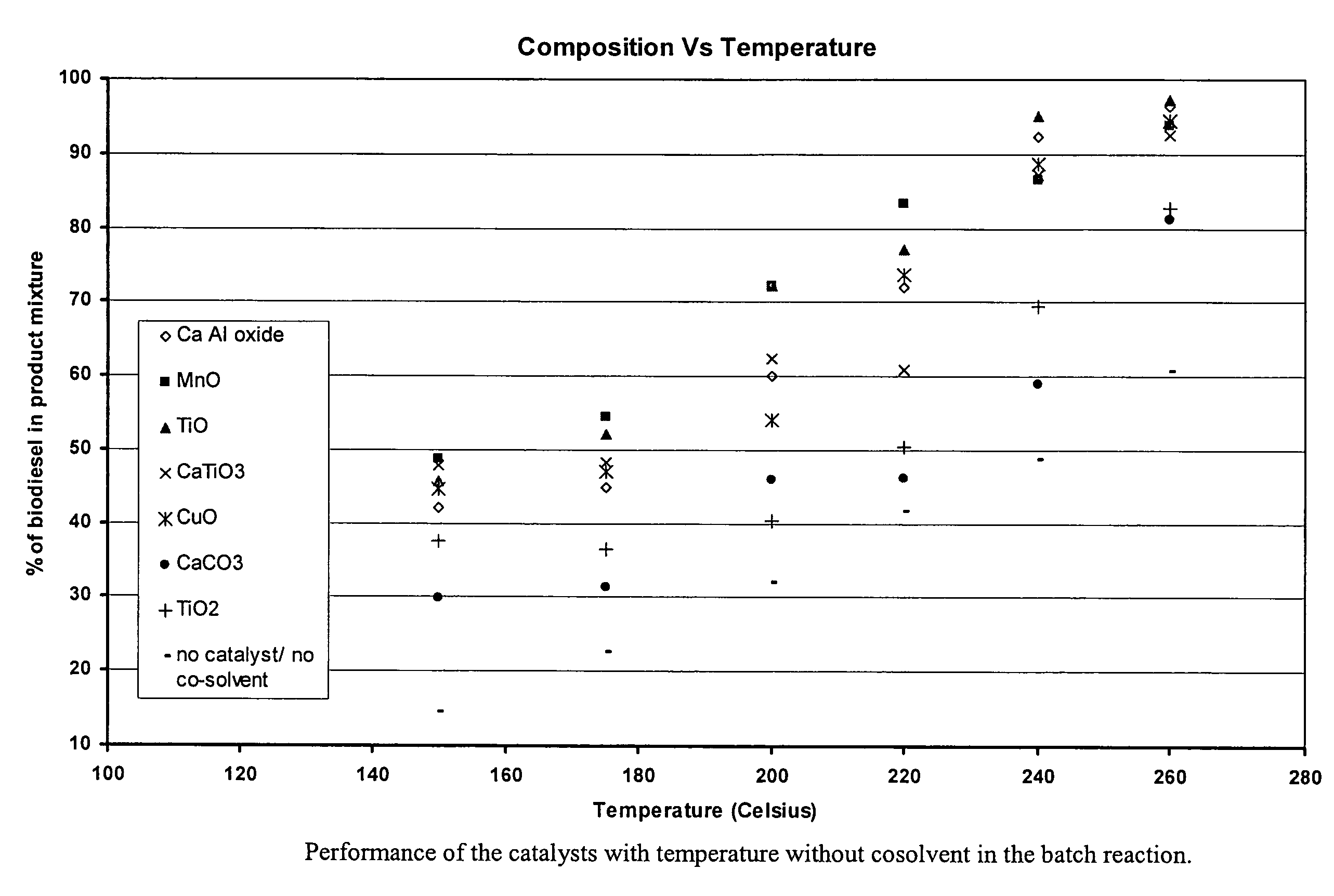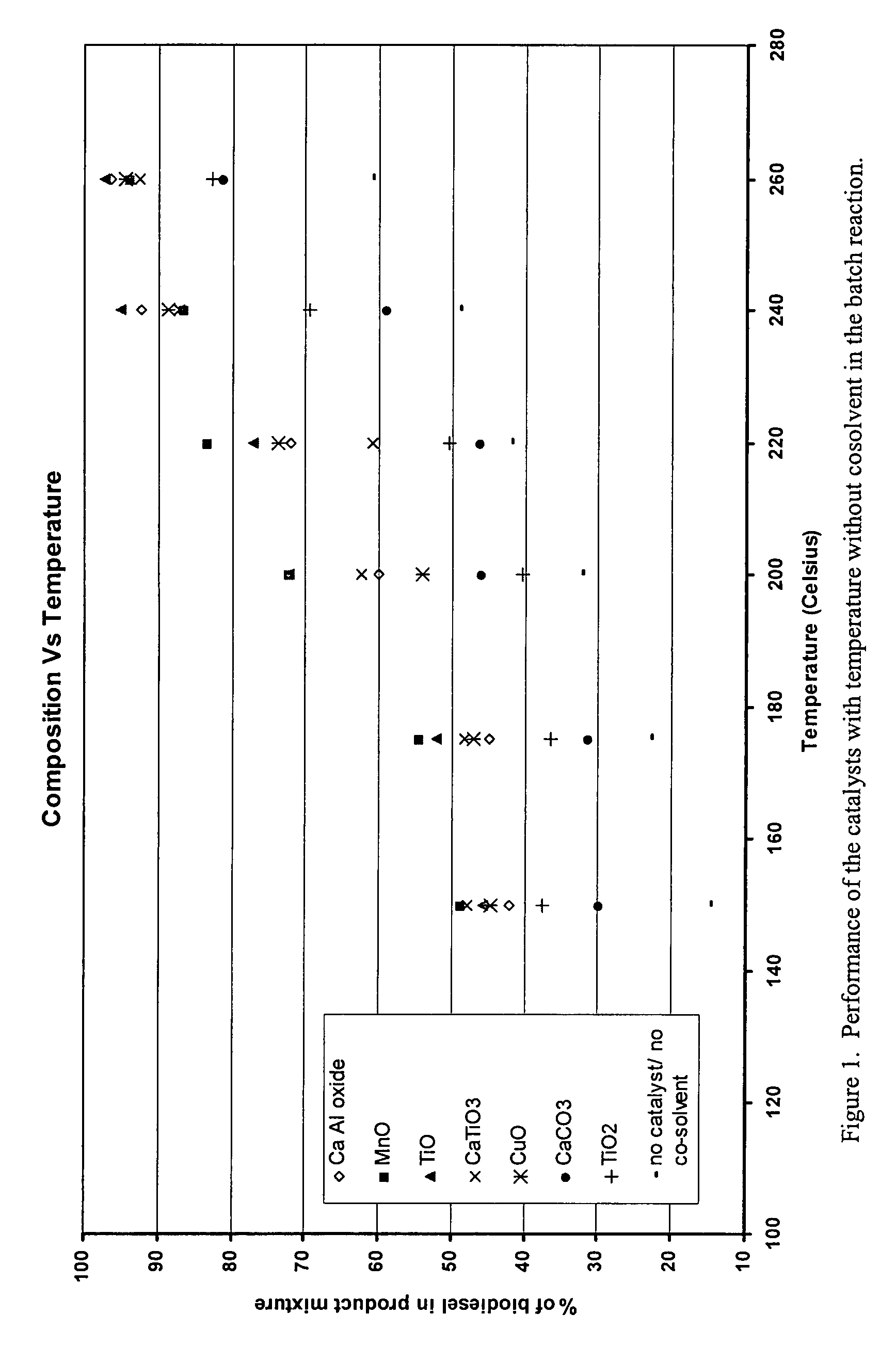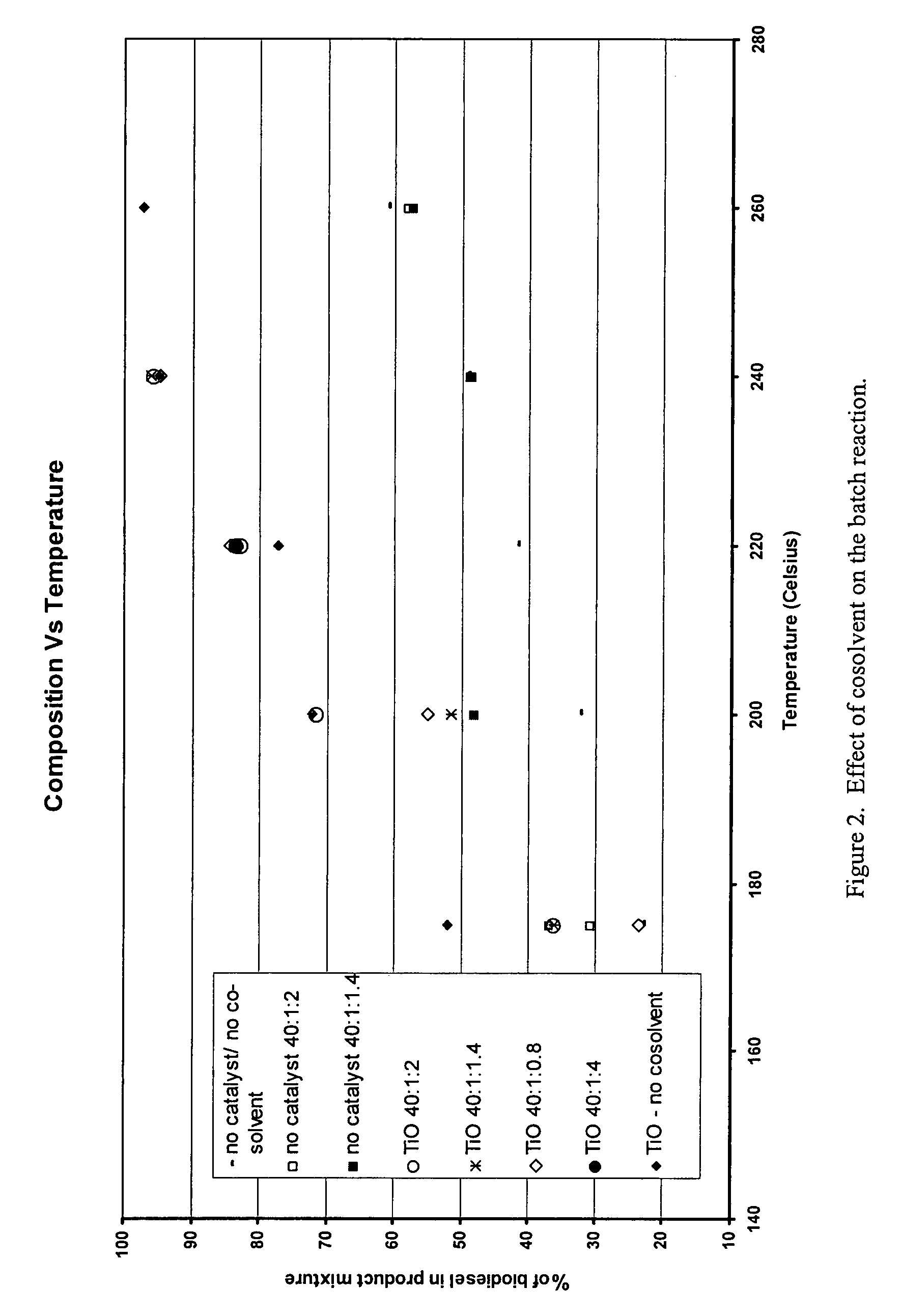Green biodiesel
a biodiesel and biofuel technology, applied in the field of green biodiesel, can solve the problems of large scale, large waste of salted catalyst regeneration, and difficult separation, and achieve the effect of saving significant processing time and energy and less was
- Summary
- Abstract
- Description
- Claims
- Application Information
AI Technical Summary
Benefits of technology
Problems solved by technology
Method used
Image
Examples
Embodiment Construction
[0011]The basic reaction between a triglyceride, such as vegetable oil, and an alcohol, such as methanol, is shown below in Formula I.
[0012]
[0013]The transesterification of a triglyceride with methanol gives methyl esters (biodiesel) and glycerol as a byproduct. The key to the transesterification reaction is the production of alkoxide ions such as methoxide (CH3O−), ethoxide (C2H5O−) and etc. The conventional process involves production of these alkoxide ions using liquid base catalysts. When using such base catalysts the reaction mechanism is a nucleophilic substitution reaction as illustrated in the following Formula II, in which methanol reacts with the base catalyst, sodium hydroxide, to form sodium methoxide. The negatively charged methoxide ion from sodium methoxide attacks the carbon atom double bonded to oxygen and is slightly positively charged due to polarization of double bond electrons towards the more electronegative oxygen atom. The resulting schematics following this ...
PUM
| Property | Measurement | Unit |
|---|---|---|
| pressure | aaaaa | aaaaa |
| temperature | aaaaa | aaaaa |
| pressure | aaaaa | aaaaa |
Abstract
Description
Claims
Application Information
 Login to View More
Login to View More - R&D
- Intellectual Property
- Life Sciences
- Materials
- Tech Scout
- Unparalleled Data Quality
- Higher Quality Content
- 60% Fewer Hallucinations
Browse by: Latest US Patents, China's latest patents, Technical Efficacy Thesaurus, Application Domain, Technology Topic, Popular Technical Reports.
© 2025 PatSnap. All rights reserved.Legal|Privacy policy|Modern Slavery Act Transparency Statement|Sitemap|About US| Contact US: help@patsnap.com



